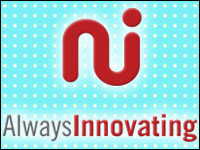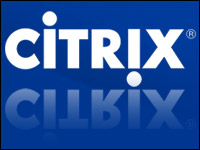
The One Laptop Per Child (OLPC) project and Microsoft have come together to make the software company’s Windows XP operating system available on the OLPC’s low-cost laptops, the XO. Sugar, a Linux-based user interface, will also be offered on XO computers.
Although OLPC had hoped to ship millions of the low-cost computers to schoolchildren in developing countries by now, to date it has shipped 600,000. The open source-based Sugar graphical user interface OLPC developed for the machines concerned education ministers, according to the organization.
“OLPC decided to make Windows available on its machines because many governments are asking for it. These governments want Windows because it is the world’s dominant operating system and the one that children will use when they grow to be adults in the workforce,” Jackie Lustig, an OLPC spokesperson, told LinuxInsider.
However, while OLPC Founder Nicholas Negroponte and Microsoft tout the agreement as a step forward for the project, some longstanding supporters in the open source community were left feeling betrayed.
XP on XO
When Negroponte began his quest several years ago, his goal was to create a US$100 laptop with all the functionality and features necessary for school-aged children. By offering low-cost computers children in developing countries, OLPC figured it could enable children to become familiar with technology and join the digital age.
In order to reach that bargain-basement price, the OLPC turned to the open source community to create an operating system (OS) it could install on the computers at little to no cost. However, despite its best efforts, OLPC has not been able to make $100 laptops widely available; current prices hover at around twice that figure.
Enter Microsoft
With competition in the low-cost PC market expected to create $3 billion in revenue worldwide by 2012, Microsoft began working on a scaled-down version of Windows XP for installation on machines from hardware makers including Asus, Intel and HP.
“[Microsoft] does not want to lose anything to Linux when it comes to client devices,” said Bob O’Donnell, an IDC analyst.
Microsoft, he said, finally wised up to the fact that they were not going to be able to charge $75 for software on a $200 system.
Not only does the inclusion of XP on the XO signify Microsoft’s determination to make a play for every segment of the OS market, it also highlights the difficulties OLPC has had to confront.
“It signifies the level of challenge the OLPC folks have faced, convincing people they want to use Linux on the device. They’ve had a hard time selling the things at all. And the people who have shown some interest have said, ‘This is interesting, but we want our kids to learn Windows because [it] is what the rest of the world uses,” O’Donnell explained.Although he said the Sugar interface was interesting, it was “a little challenging to figure out,” O’Donnell told LinuxInsder.
Putting XP on the laptops will probably increase sales of the machines, he added. Even with a bump in price of as much as $20 — $3 of which is for Windows; the remainder goes to hardware needed for the OS — it is still a good deal.
“You have much wider application compatibility and theoretically device support if people want to plug something into these machines. They want the kids to learn something that is useful for practical work experience, and people aren’t going to be using Linux on desktop devices probably for some time to come. It’s going to be some flavor of Windows,” O’Donnell pointed out.
Over to the Dark Side?
OLPC will continue to offer machines loaded with Sugar, Negroponte said, and the organization is working on an XO that will boot Windows and Linux for users who want to experience both operating systems. However, that is a long-term plan.
The partnership with Microsoft has left some in the open source community disappointed.
“The disappointing part of the news is that there will be XP-only boots in the near future. The ones they’re rolling out in July are XP-only,” said Wayan Vota, editor of OLPCNews.com
Vota questioned whether users will even consider a Linux OS when XP will support Sugar and predicted that the dual boot option will remain a concept and not become a reality.
“It’s a great disappointment to see that all work from the open source community is being trashed by Negroponte,” he told LinuxInsider.
“With Microsoft on [the XO] this is definitely a bitter moment in the open source community. It will definitely drop the support level of OLPC. This is one of our greatest fears we had with OLPC in taking this path — they, in a sense, give everyone an excuse to not deal with an open source project next time,” Vota continued, adding that the situation is a result of the OLPC’s marketing failure.
“When governments are asking if it runs Windows, they’re saying is this a cheaper version of [a] business laptop. It will lose the comparison each time because it is not a business laptop,” he explained.
In response, Lustig pointed out that OLPC is “agnostic about which operating system is on the device.”
“In the end, OLPC’s mission is to get laptops into the hands of children in the developing world and to foster learning,” she said.
The Linux community is extremely passionate and many within the community are against Windows no matter what, Luftig continued.
“OLPC has said it will continue to work closely with the open source community, and the XO laptop will be dual boot — both Windows and Linux,” she concluded.





















































these computers will probably be the first computer that user has ever, well, used. they will definitely have no idea how to use it, and it will be required to include localized instructions.
First: Windows is a complex and unstable beast for newbies, with all of those 2-3" user guides and troubleshooters that you can pick up from the book store to prove it. If some little African kid picks up one of these for the first time, he will have no idea how to use it, and might not get past the learning stage or figuring out what went wrong to the fun part, and will just leave it alone and go outside to play or help out with work around the village. I have never used Sugar but I believe it has been built from the ground up to have a shallow learning curve and be so simple to use that it is actually fun, let alone that it will be much more reliable or easy to fix if there is a hiccup.
Second: localization. since Sugar is an open-source OS, anyone can create or fix a localized language pack that follows the proper spelling and grammar of that specific area’s dialect. Windows, since it is closed source, only can be localized by Microsoft, which will most likely not do every single dialect correctly, but of just the core of that language, which may be incorrect and confusing, but might never be fixed.